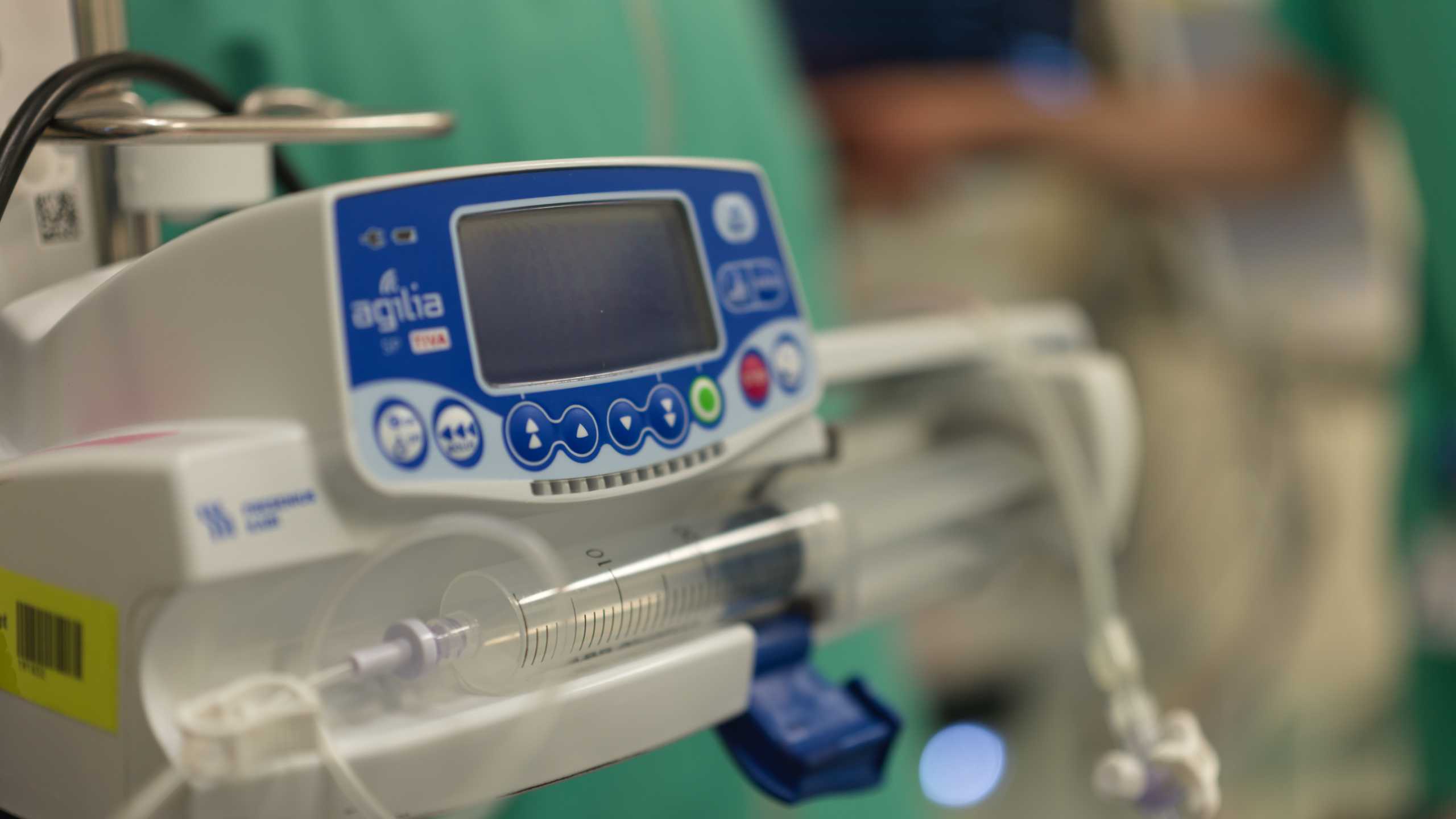
Spinal insertion in a Cat 2 setting
Obstetric AnaesthesiaUse this resource in conjunction with your real-world training

These films have been created for training purposes with individual roles played by medical professionals and/or mannequins.
No actual patients have been used in the videos.
The processes and the procedures follow the Royal Berkshire NHS Foundation trust guidelines at the time of creation.
Experience Summary
In this 360-degree video, observe the anaesthetic team counsel the patient on, and perform a spinal anesthetic in the context of a category 2 caesarean section.
Clinical Context
Although time is limited, a focused anaesthetic assessment is crucial. The following key history points should be obtained quickly but systematically:
- Allergies: Especially to local anaesthetics, opioids, or latex.
- Anaesthetic history: Previous spinal or epidural experiences, difficulties with airway or regional blocks, and any history of post-dural puncture headache.
- Medical conditions: Bleeding disorders, pre-eclampsia, cardiac disease, spinal abnormalities, or infections.
- Medications: Anticoagulants (e.g., LMWH), antihypertensives, or antiepileptics.
- Fasting status: To assess aspiration risk, though this may not delay the procedure in emergencies.
Clinical Counselling
The patient should be informed, in a calm and reassuring manner, that spinal anaesthesia involves injecting a local anaesthetic into the lower back to numb the body from the chest down. It acts quickly and avoids the risks of general anaesthesia.
Benefits include being awake for the birth and quicker maternal recovery. Risks should be outlined clearly:
- Common: Low blood pressure, nausea, shivering, incomplete block.
- Less common: Spinal headache, high spinal block, urinary retention.
- Rare: Nerve damage, infection, or need for general anaesthesia if spinal fails.
Consent should be documented, even if verbal due to urgency.
Procedure
- Preparation:
- Confirm identity, allergies, and obtain IV access. Apply full monitoring (ECG, BP, SpO₂) and preload or co-load with IV fluids.
- Confirm identity, allergies, and obtain IV access. Apply full monitoring (ECG, BP, SpO₂) and preload or co-load with IV fluids.
- Positioning:
- Sit or position the patient laterally with optimal spinal flexion.
- Sit or position the patient laterally with optimal spinal flexion.
- Aseptic technique:
- Clean the lumbar area with antiseptic and use sterile gloves, gown, and drapes.
- Clean the lumbar area with antiseptic and use sterile gloves, gown, and drapes.
- Local anaesthetic:
- Infiltrate skin and subcutaneous tissue with lidocaine.
- Infiltrate skin and subcutaneous tissue with lidocaine.
- Spinal injection:
- Insert a fine spinal needle at L3–L4 or L4–L5. Once cerebrospinal fluid is seen, inject 2.0–2.5 mL of 0.5% hyperbaric bupivacaine with fentanyl/morphine.
- Insert a fine spinal needle at L3–L4 or L4–L5. Once cerebrospinal fluid is seen, inject 2.0–2.5 mL of 0.5% hyperbaric bupivacaine with fentanyl/morphine.
- Positioning and monitoring:
- Lie the patient supine with left uterine displacement. Monitor vitals and treat hypotension promptly.
- Lie the patient supine with left uterine displacement. Monitor vitals and treat hypotension promptly.
- Assess block:
- Ensure block to T4 before surgery begins.
- Ensure block to T4 before surgery begins.
Learning Outcomes
- Observe the procedure of inserting a spinal anaesthetic
- Understand the steps of performing a spinal anaesthetic
- Understand the key safety counselling points for a spinal anaesthetic
External Resources
